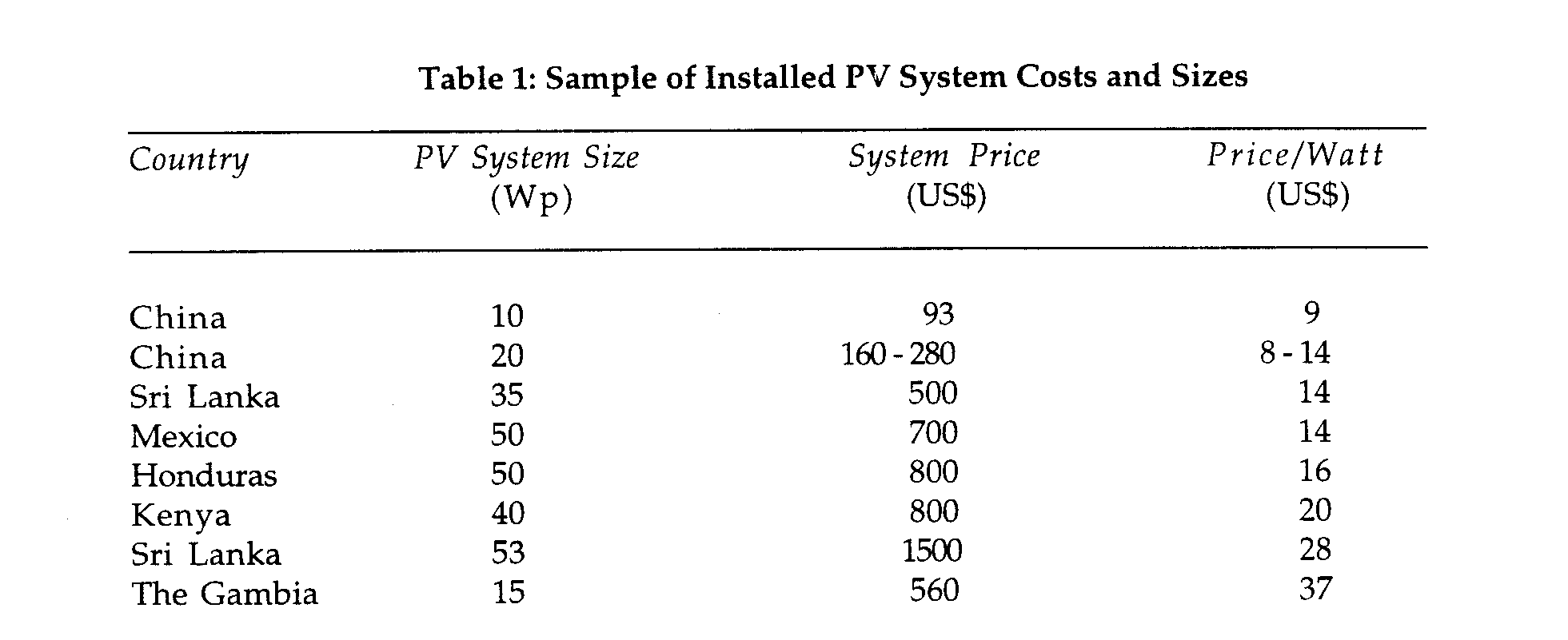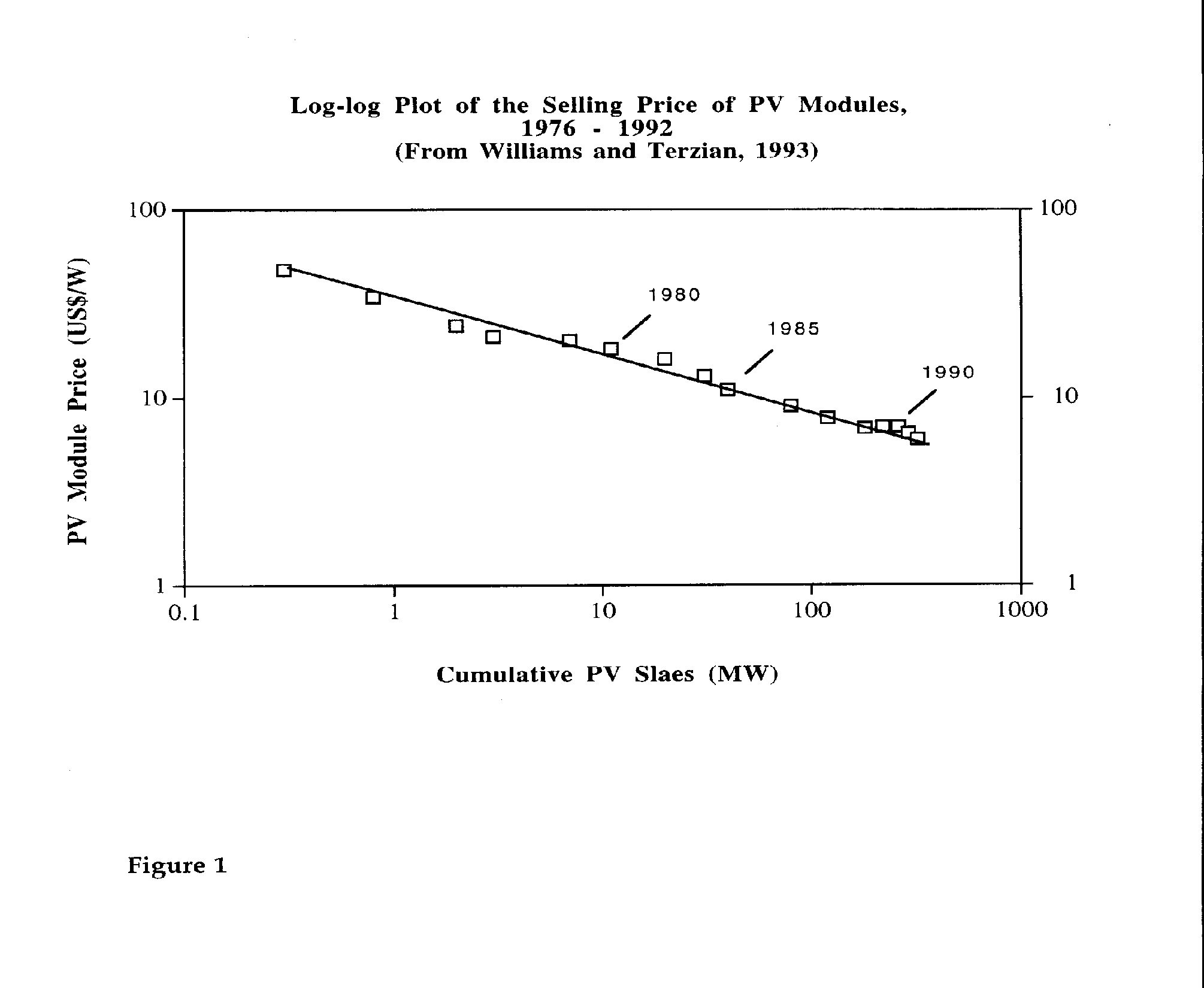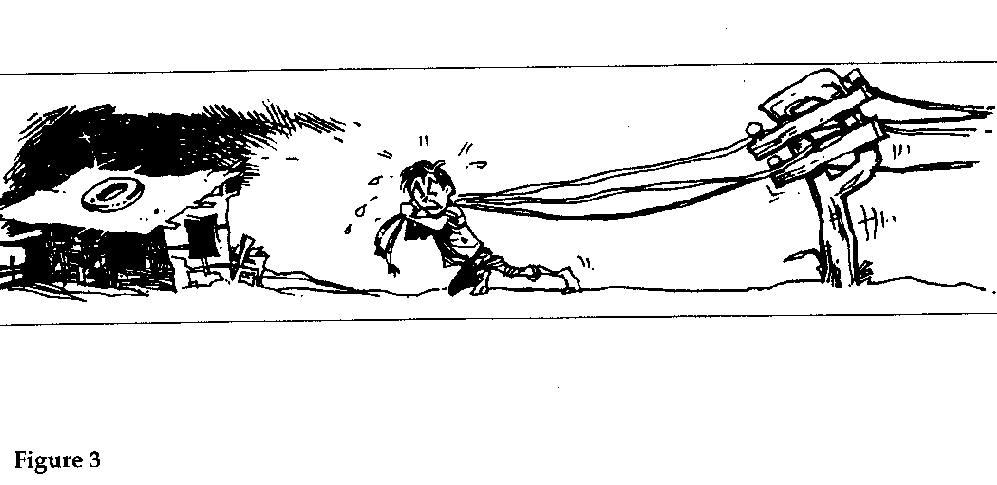
Daniel M. Kammen
Woodrow Wilson School of Public and International Affairs
Princeton University, Princeton NJ 08544 USA
kammen@princeton.edu
August 10, 1996
Summary
Recent progress worldwide in the development and dissemination of photovoltaic technology has now reached a crucial juncture. Roughly 100,000 - 200,000 small-scale systems, mainly in the range of 10 - 80 watts each, have been installed in developing nations, with significant progress in a diverse set of countries, including China, The Dominican Republic, Honduras, Indonesia, Kenya, Mexico, South Africa and Zimbabwe. This growth is the result of both public and private sector initiatives, and has sparked considerable interest, sharp debate, and potentially large new investments by a range of commercial enterprises, multinational and national aid agencies, and non-governmental organizations. Nurturing this sustainable energy industry will require careful attention to a range of technical, economic, political, social, and environmental questions, all of which sharply impact the capacity of photovoltaics to play an important role in developing nations.
Additional reading:
This report is, in part, based on, "The quiet (energy) revolution:
analysing the dissemination of photovoltaic power systems in Kenya"
by Richard Acker and Daniel M. Kammen. The paper appeared in the
January 1996 issue of Energy Policy, Vol. 24, No. 1,
pages 81 - 111.
Introduction
Today nearly two billion people worldwide remain without electricity or the immediate prospect of grid electrification. It is sobering to realize that while over 1.2 billion people have gained access to grid-connected electricity services over the past 20 years, this has not even kept pace with the population, that has grown by over 1.5 billion during the same span. In Africa, grid extension has been the slowest of all the major regions of the 'South'; only half of urban residents and a mere eight percent of the rural population have are served by electrification. Meeting the growing demand for power over the next decades will be exceedingly difficult in itself, and will be compounded by the challenge of doing so without massive increases in greenhouse gas emissions.
Photovoltaic (PV) technology has the potential to play an important role in the efforts to meet the combined global environmental and social challenges of development. The numbers are, so far, are an impressive beginning. In Kenya, an estimated 20,000 - 40,000 solar home systems have been installed (Acker and Kammen, 1996), while in South Africa another 40,000 - 60,000 home systems are in place, as well as 500 - 700 clinic and school installations, and 2,000 - 4,000 PV water pumping systems. The initial success in several PV markets provides an important opportunity to nurture as well as to study the diffusion of renewable energy systems. Estimates generally range from 10,000 - 30,000 new solar home systems (SHS) worldwide curently being installed each year.
In this letter I will briefly highlight some of the economic and policy questions that must be addressed to replicate and extend this model. The time for action is certainly now: a major PV program in Zimbabwe sponsored by the Global Environment Facility is showing signs of success, but is also facing important questions and criticisms; large-scale investments in PV infrastructure in South Africa are planned; and the World Bank is launching a major 'solar initiative' (Anderson and Ahmed 1995).
Renewable Energy Economics
Photovoltaic systems were once environmentally appealing but prohibitively expensive solutions to energy needs. Over the past 20 years, however, there has been a 10-fold reduction in the delivered price of energy from PV systems, to current costs as low as US$ 4 - 5 per peak watt [1] (Wp) and US$ 0.25 - 0.35/kWh. Small home-systems in developing nations typically supply 10 - 80 Wp costing US$ 10/Wp or more to install, with US$ 1.00/kWh or more a representative operating cost. While this is still well above the costs of power from fossil-fuel plants, which in areas of optimal demand and fuel cost can reach 3 - 4 cents/kWh, there are reasons to be hopeful. The small module size of PV systems and comparative ease of manufacture means that they can rapidly exploit the 'learning by doing' cycle seen in many industrial sectors. True to form, the price of PV modules has decreased by roughly 20% for each doubling of the number of units produced (Williams and Terzian, 1994), as seen in Figure 1. Investment in research and continuing support for 'pre-economic' pilot projects as a means to spur new markets both contribute to further decreases in cost and improvements in the technology. Beyond that, PV is a 'flexible' technology where systems of many sizes can be easily constructed and very cheaply maintained to meet a range of power demands.
PV systems have, of course, always been appealing where rural electrification by grid extension is prohibitively expensive or physically impractical. To see this, compare PV to the two traditional means to provide electricity: connection to local diesel or petroleum generator; or by extension of a national or regional grid. Both of these can be expensive and, at times, unreliable. Private, diesel-based mini-grids in developing nations often charge over US$ 1/kWh for access (Foley, 1995). At the same time, grid extension in rural areas of developing nations may exceed US$ 10,000/km, which, if coupled with low daily load factors makes rural electricity services very expensive. In fact, when monthly loads are 10 - 15 kWh -- as can be the case in newly electrified areas, or in particularly poor districts -- this source of electricity is no cheaper than PV power is today (Arvidson, 1995).
Considerable variation exists in the costs of installed PV systems. A recent survey of solar home systems ranged from US$ 8/W in parts of China to over US$ 37/W in The Gambia. A representative summary is provided in Table 1 (data from Foley, 1995, and Acker and Kammen, 1996).
Table 1: Sample of Installed PV System Costs and Sizes

The Kenya PV Experience in Brief
As in many nations, the international, or donor, PV market has been active in Kenya, contributing perhaps 1 MW of capacity by 1993 (Foley, 1995). The applications targeted were varied: water and power systems; game fences; telecommunications; refrigeration; and lighting for schools and hospitals (Hankins, 1993). This activity further raised awareness of PV, and provided training opportunities for technicians and future entrepreneurs. The experience in Kenya is particularly interesting, however, because of the vital role played by the private sector.

Between 1987 and 1993 some 20,000 to 40,000 systems were sold, totaling over half a MW. In a survey of over 40 system owners in three districts, we found the average system to be 38 Wp and cost close to US$ 800 (Acker and Kammen, 1996). The solar panel and battery for typical small home systems accounts for 40 and 34% of the total system cost, respectively, with the rest of the system breakdown, on average, as follows: lamps (13%); charge controller (8%); wiring and switches (4%); converter; and labor (3%) each.[2] As is not surprising, the median income of PV owners in our survey (US$ 1380) was somewhat above that of the average Kenyan household (US$ 1030).
The systems visited were generally working quite well: 60% were fully operational, 30% partly operational, and only 10% were not working. The owners' opinions reflected this: in response to our surveys, many people noted not only the cost benefits of PV over kerosene and other fuels, but also the quality of the light, system reliability, and ease of maintenance. The truest test is that of functionality, and even these tiny systems often dramatically changed the quality of life, providing lighting, radio and television for several hours a day, and in some cases refrigeration or other appliances (Figure 2).

The owners were, of course, not without complaints, which were mainly centered around the lack of PV power in the rainy season, and performance problems associated with the battery or the light bulbs. Interestingly, the initial system cost was rarely mentioned. The Kenya PV industry is still evolving, and would benefit from better batteries, reductions in the level of tariffs on the PV panels,[3] greater availability of rural credit, as well as lines of business credit for PV vendors and struggling companies.
Renewable Energy Politics
The promise of PV as an instrument for sustainable development led the Global Environment Facility (a World Bank/UNDP joint initiative) and the Government of Zimbabwe to embark in 1993 on a multi-million dollar project to install over 9,000 solar lighting systems in homes and villages (GEF, 1993). GEF documents sensibly outline how this is to be accompanied by an expansion and strengthening of the indigenous PV industry, while some fossil fuel use is to be offset or foregone. The focus on PV at the national and international levels is important, both to develop local expertise within Zimbabwe, and to serve as a model and testing-ground for other nations. The project is not yet complete, but it is encouraging that 1,000 or more new systems are being installed each year, and that local residents (Nyoni, 1995) and GEF officials are pleased so far, and optimistic that the industry will thrive and grow after the loan ends.
At the same time, however, a representative from ZERO, a regional energy and environmental policy group based in Harare, Zimbabwe, has criticized the program for not doing enough to include a range of local organizations in the planning process, or to involve and train local manufacturers through the implementation and subsequent commercialization phases of the GEF project (Maboyi, 1995). The repercussions of not accomplishing this goal would be severe. This highlights a dark theme in international development projects: the potential for beneficial technology transfer and local capacity building on the one hand, and technological imperialism on the other. Mr. Bhekumusa Maboyi of ZERO warns that:
A major question still to be answered [in the GEF Zimbabwe Project] is whether the domestic solar industry will be in a technically stronger position at the end of the project or will crumble under the established European, Japanese, and American solar firms.
The industrialized countries are only looking for markets, nothing else. Yes we need technology, but their technology is conditional. They have to sell that technology well in those countries having the sun (interview with L. Machipisa, 1995).
Building and Evaluating Technological Infrastructure
The GEF Zimbabwe project is an invaluable lens on a number of fundamental questions in development theory and policy. A further criticism by Mr. Maboyi (1995) was that the GEF project artificially restricted itself to lighting, when, "a broader application [of] solar energy would have been more beneficial, as for instance in water pumping."
This illustrates the 'uneven landscape' problem of development. Poor nations and regions require -- almost by definition -- improvement in virtually every area of infrastructure. At the same time, development planners are often wary of broad, unfocused projects that may produce little in the way of measurable results.
The result can be an inefficient dynamic: projects are designed to target specific issues, industrial sectors, and even particular technologies. At the same time, the local economy is unable to efficiently exploit the new resources, or expand beyond the project because the overall infrastructure -- technical, educational, and financial -- is lacking or has not yet developed. Projects to install a 'high-tech' factory in a region otherwise lacking infrastructure with the goal of 'seeding' development typify this model. The two most likely outcomes are decay of the facility, or a small elite operates the new plant largely outside the local economy.
The evolution of the photovoltaic industry in Kenya (as well as the goal for Zimbabwe) provides a notable counter-example. During the early and middle 1980's the installation of virtually all PV systems in Kenya was accomplished by government agencies, donor projects, and private development groups (Hankins, 1993). Progress was initially slow, but many of the trainees in these early projects are now active in diverse aspects of the PV industry. Attention to a broad range of needs, that may cross-cut energy, health, agriculture, economics and education may be necessary to make efforts in any one sector successful (Walubengo and Onyango, 1992). The challenge is that interdisciplinary projects are generally more difficult to conceive and to manage properly.
The Zimbabwe PV project illustrates the need to develop interdisciplinary planning and assessment tools as well. One objective for the project is to reduce fossil fuel burning and the associated emissions of greenhouse gases. The GEF estimates that as a result of the project, some 9,000 - 10,000 households that install PV systems will then reduce kerosene consumption by nine gallons per year, preventing the release of 400 tons of carbon to the atmosphere (GEF, 1993). A criticism arose that as a means to prevent global warming, the Zimbabwe PV project does so at US$ 500 - 2600 dollars per ton of carbon (Drennen, et al., 1996). [5] This is far higher than many other available means if the goal were simply to sequester carbon. While true in a strict and short-term economic calculation, the PV project has the potential to be of great benefit, including, but not limited to, its impact on greenhouse gas emissions.
How are the costs and benefits of education calculated? How are the costs and benefits of developing an infrastructure for a new, renewable energy, industry estimated? These logical but unanswered questions reflect the need to develop a better interdisciplinary understanding of the process of technology transfer and the development of local capacity, as well as the marginal costs[6] and long-term benefits of integrated energy and environmental projects.
Research and Project Directions: Questions and Opportunities
The most striking aspect of the international PV experience may be the sheer number of questions that remain to be answered. How can rural grid-based electrification, stand-alone PV and diesel systems best be utilized to complement each other? What is the optimal division of investment in demonstration and pre-economic projects versus basic photovoltaic R&D, particularly for nations at varying stages of infrastructure development? Can the benefits of electrification be quantified to facilitate investment decisions between unlike technologies and projects? An active dialog between end users, entrepreneurs, development practitioners and academic researchers is vital to broadening our understanding of the PV technology transfer process.
The experience with PV illustrates that not only can a great deal be accomplished with renewable energy systems, but also that philosophically very different energy 'paths' are possible. Many energy planners dismiss decentralized, house-by-house or village-by-village photovoltaic systems as insignificant or too costly. This argument often boils down to a numbers game: all of the installed PV capacity in, for example, Kenya -- a few megawatts -- is seen as unimportant next to fossil-fuel or hydroelectric installations that may each produce hundreds of times that amount. Large power plants, however, require long construction times and extensive infrastructure to utilize efficiently.
The benefits of the power generated by large central-station plants often do not percolate down to the rural population or to the poor, who can neither access nor afford conventional grid electrification. The paradox of large power plants that fail to serve the local population have increasingly been the targets of protest by indigenous organizations. In the Philippines the Kinaiyahan Foundation and other NGO's have rallied against the exploitation of local lakes and rivers, as illustrated in Figure 3, that disrupt the regional economy and ecology while providing minimal benefits (Mincher, 1993). PV provides one means to change the paradigm of central-station energy planning. Again, Masse Lo of ENDA-TM comments that:
It seems to me that developing solar energy technology should be on the basis of a bottom-up approach. What exists at the local level are not energy needs. What exists are social needs (interview with L. Machipisa, 1995).

Thanks to Richard Acker, Richard Duke, George Kassinis, Debra Lew, and Robert Margolis for data, comments, and their active interest and participation in this work.
References and Further Reading:
Acker, R. H. and Kammen, D. M. (1996) "The quiet (energy) revolution: analysing the diffusion of photovoltaic power systems in Kenya", Energy Policy, 24 (1), 81 - 111.
Anderson, D. and Ahmed, K. (1995) The case for solar energy investments Technical Paper No. 279, Energy Series (World Bank: Washington, DC).
Arvidson, A. (1995) "From candles to electric light: Can poor people afford solar electricity?" Renewable Energy for Development, 8 (4), 4 - 5.
Foley, G. (1995) Photovoltaic applications in rural areas of the developing world, Technical Paper No. 304: Energy Series (World Bank: Washington, DC).
Global Environment Facility (1993) Zimbabwe: Photovoltaics for household and community use (GEF/UNDP/World Bank: Washington DC).
Hankins, M. (1993) Solar Rural Electrification in the Developing World; Four Case Studies: Dominican Republic, Kenya, Sri Lanka, and Zimbabwe, (Solar Electric Light Fund: Washington, D. C.).
Maboyi, B. (1995) "Technology transfer overlooked in GEF solar project", Renewable energy for development, 8 (4), 3 - 7.
Machipisa, L. (1995) Interview with Mr. Masse Lo, 14 September (Inter Press Service: Harare, Zimbabwe).
Mincher, P. (1993) "The Philippine energy crisis", The Ecologist, 23 (6), 228 - 233.
Nyoni, N. (1995) "Solar energy - Africa's cheapest but unexploited source of energy", Energy & Environment: the ZERO Newsletter, vol. X, 4.
Walubengo, D. and Onyango, A. (1992) Energy Systems in Kenya: Focus on Rural Electrification (KENGO; Nairobi, Kenya).
Williams, R. H. and Terzian, G. (1994) "A benefit/cost analysis of accelerated development of photovoltaic technology", Center for Energy and Environmental Studies Paper PU/CEES 281 (Princeton University: Princeton, NJ).